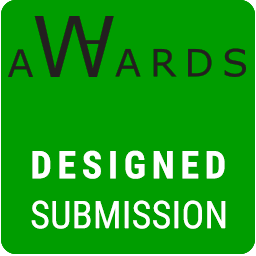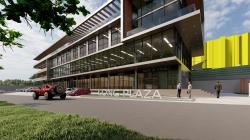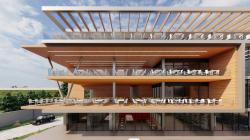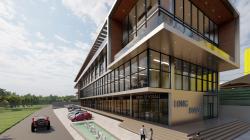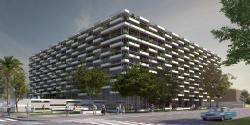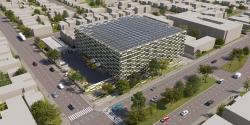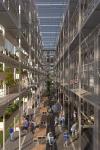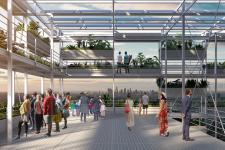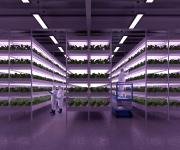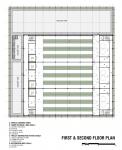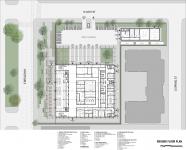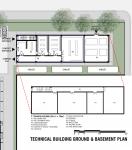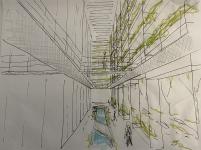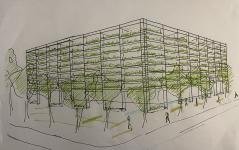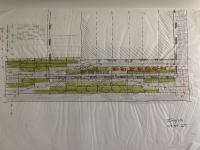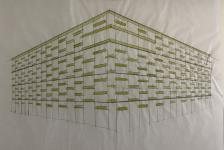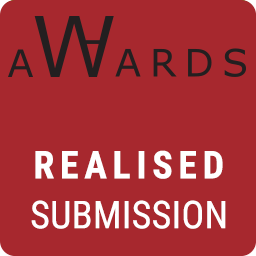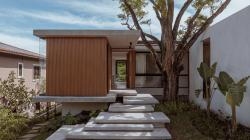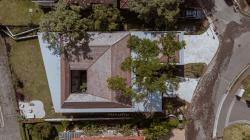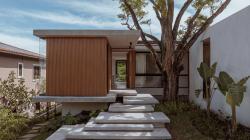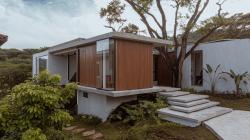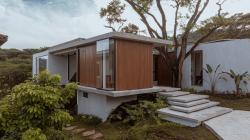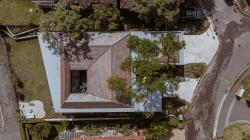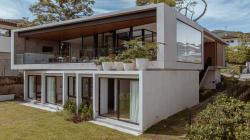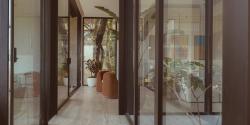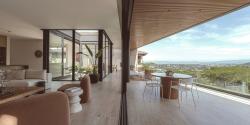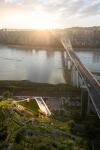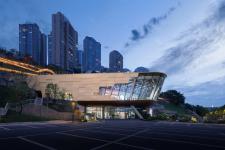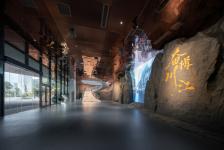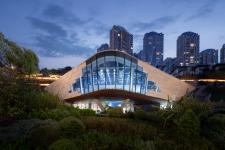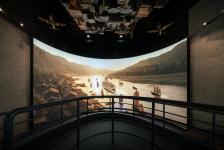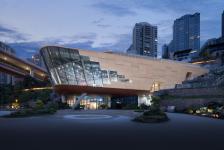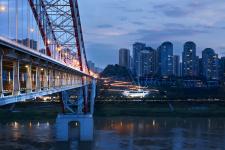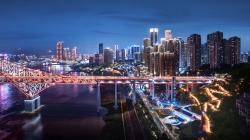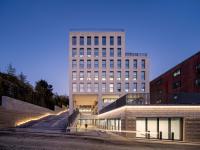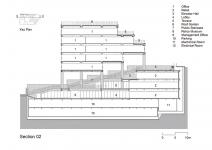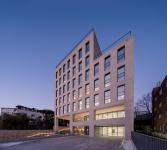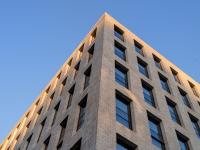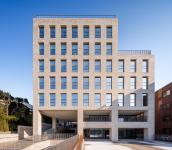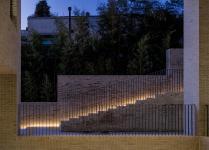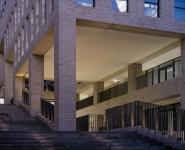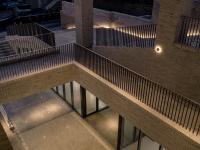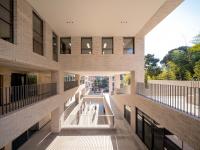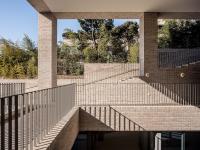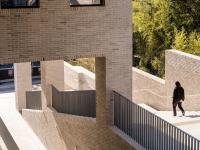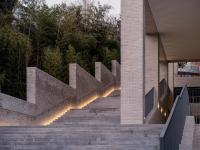World Architecture Awards 10+5+X Submissions
World Architecture Awards Submissions / 52nd Cycle
Vote button will be active when the World Architecture Community officially announces the Voting period on the website and emails. Please use this and the following pages to Vote if you are a signed-in registered member of the World Architecture Community and feel free to Vote for as many projects as you wish.
How to participate
WA Awards Submissions
WA Awards Winners
Architectural Projects Interior Design Projects
Architectural Projects Interior Design Projects
Long Plaza
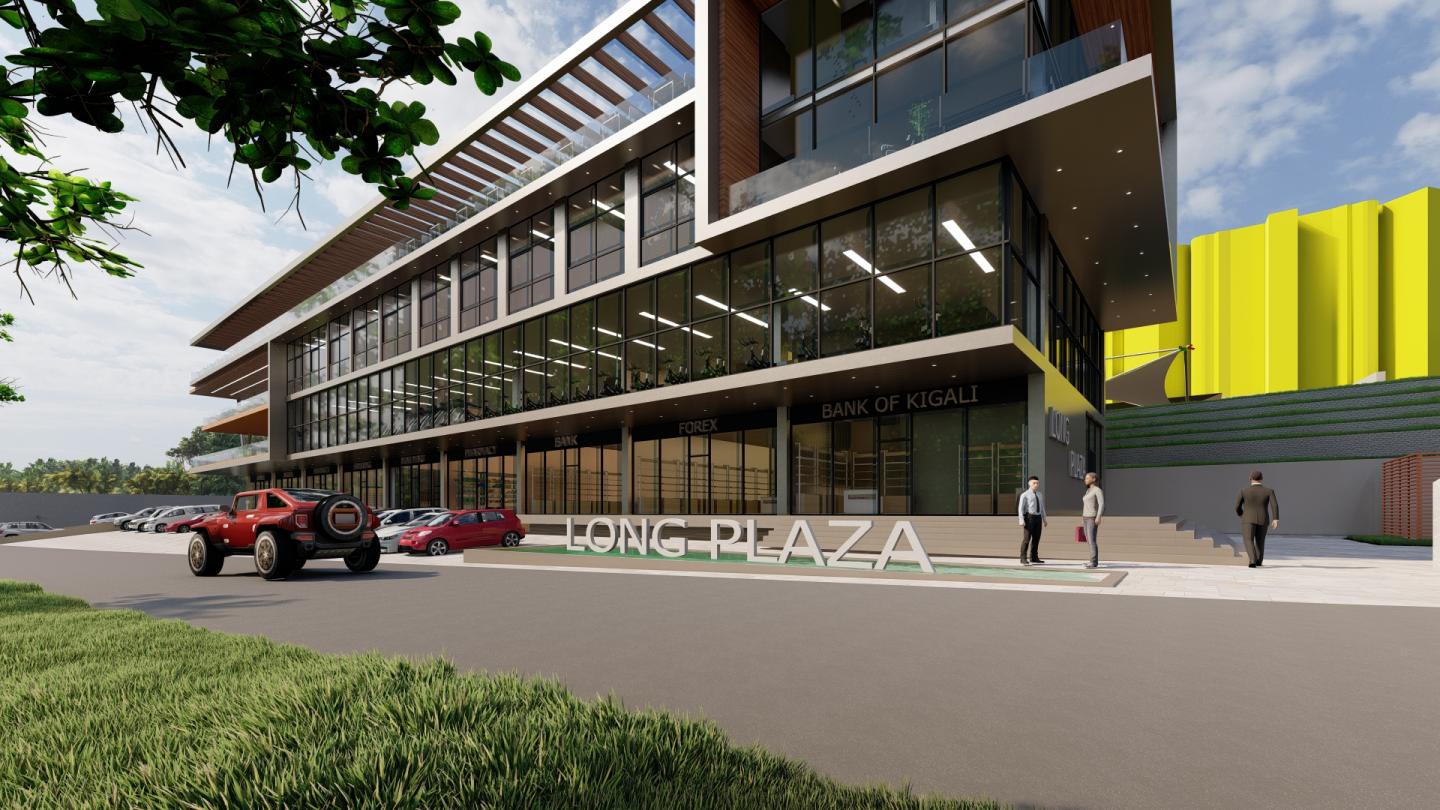

Long Plaza is a mixed-use commercial complex designed to provide a vibrant hub for retail, services, banking, and leisure activities. The building is located in Kigali and is envisioned as a contemporary architectural landmark that combines modern retail typologies with open-air terraces and social spaces.
The project’s architectural approach emphasizes transparency, accessibility, and spatial layering, while creating a strong street presence that invites both pedestrians and vehicles.
1. Functional Program & Spatial Distribution
The building is organized into a clear vertical hierarchy across multiple levels:
Ground Floor (G):
Main entrance lobby and direct street access.
Retail units including pharmacy, convenience shops, and brand showrooms.
Multiple entrances for pedestrian flow and customer accessibility.
First Floor (1):
Retail and commercial services, including fitness/wellness functions.
Direct connection with restaurants and informal dining areas.
Open floor plan allows flexible tenant subdivision.
Second Floor (2):
Professional services such as dental clinic and additional food outlets.
Balanced integration of healthcare and leisure to maximize public attraction.
Third Floor (3):
Dedicated to restaurants and dining facilities.
Large terraces extending outward to create semi-open dining experiences.
Strategic use of double-height spaces to maximize daylight and outdoor views.
2. Circulation and Accessibility
Vertical circulation is achieved through strategically placed staircases and service cores, highlighted in the exploded axonometric diagram.
The building’s circulation emphasizes direct flow from ground entrances upward to terraces, encouraging a natural transition from commercial to social spaces.
Multiple entrance points at ground level ensure permeability from different directions, enhancing urban integration.
3. Architectural Language & Materiality
Façade Strategy:
Extensive use of glass curtain walls provides natural light penetration and visual transparency, strengthening the building’s retail character.
Projecting terraces with wooden soffits create a warm, tactile contrast to the glass façade, offering both shading and human scale.
Structural Expression:
Exposed inclined steel columns emphasize dynamism and architectural identity while structurally supporting cantilevered terraces.
Material Palette:
Combination of glass, steel, and wood finishes ensures a balance between modernity and natural warmth.
The linear wooden cladding under the terraces adds rhythm and depth to the elevation.
4. User Experience & Public Realm
Outdoor dining terraces establish a vibrant social character, maximizing Kigali’s favorable climate.
Retail variety (banks, branded shops, barbers, pharmacy) creates an everyday-use hub for the community.
The plaza frontage is activated with signage, landscaping, and parking spaces, enhancing accessibility for customers arriving by car.
5. Sustainability Considerations
Deep cantilevered terraces provide passive shading, reducing solar gain on glazed façades.
Natural cross-ventilation opportunities are integrated through terrace openings and façade modulation.
Efficient floorplates allow adaptive re-use of commercial spaces in response to changing tenant needs.
6. Conclusion
Long Plaza is designed as a modern commercial plaza that blends retail, healthcare, banking, and dining into a coherent architectural statement. Its layered terraces, transparent façades, and warm materiality establish it as a recognizable landmark. Beyond its commercial function, the project offers a lifestyle destination, fostering social interaction, leisure, and economic activity in Kigali.
Basement G 3 floors
Selim Senin
Isinsu Sopaoglu
The project’s architectural approach emphasizes transparency, accessibility, and spatial layering, while creating a strong street presence that invites both pedestrians and vehicles.
1. Functional Program & Spatial Distribution
The building is organized into a clear vertical hierarchy across multiple levels:
Ground Floor (G):
Main entrance lobby and direct street access.
Retail units including pharmacy, convenience shops, and brand showrooms.
Multiple entrances for pedestrian flow and customer accessibility.
First Floor (1):
Retail and commercial services, including fitness/wellness functions.
Direct connection with restaurants and informal dining areas.
Open floor plan allows flexible tenant subdivision.
Second Floor (2):
Professional services such as dental clinic and additional food outlets.
Balanced integration of healthcare and leisure to maximize public attraction.
Third Floor (3):
Dedicated to restaurants and dining facilities.
Large terraces extending outward to create semi-open dining experiences.
Strategic use of double-height spaces to maximize daylight and outdoor views.
2. Circulation and Accessibility
Vertical circulation is achieved through strategically placed staircases and service cores, highlighted in the exploded axonometric diagram.
The building’s circulation emphasizes direct flow from ground entrances upward to terraces, encouraging a natural transition from commercial to social spaces.
Multiple entrance points at ground level ensure permeability from different directions, enhancing urban integration.
3. Architectural Language & Materiality
Façade Strategy:
Extensive use of glass curtain walls provides natural light penetration and visual transparency, strengthening the building’s retail character.
Projecting terraces with wooden soffits create a warm, tactile contrast to the glass façade, offering both shading and human scale.
Structural Expression:
Exposed inclined steel columns emphasize dynamism and architectural identity while structurally supporting cantilevered terraces.
Material Palette:
Combination of glass, steel, and wood finishes ensures a balance between modernity and natural warmth.
The linear wooden cladding under the terraces adds rhythm and depth to the elevation.
4. User Experience & Public Realm
Outdoor dining terraces establish a vibrant social character, maximizing Kigali’s favorable climate.
Retail variety (banks, branded shops, barbers, pharmacy) creates an everyday-use hub for the community.
The plaza frontage is activated with signage, landscaping, and parking spaces, enhancing accessibility for customers arriving by car.
5. Sustainability Considerations
Deep cantilevered terraces provide passive shading, reducing solar gain on glazed façades.
Natural cross-ventilation opportunities are integrated through terrace openings and façade modulation.
Efficient floorplates allow adaptive re-use of commercial spaces in response to changing tenant needs.
6. Conclusion
Long Plaza is designed as a modern commercial plaza that blends retail, healthcare, banking, and dining into a coherent architectural statement. Its layered terraces, transparent façades, and warm materiality establish it as a recognizable landmark. Beyond its commercial function, the project offers a lifestyle destination, fostering social interaction, leisure, and economic activity in Kigali.
Basement G 3 floors
Selim Senin
Isinsu Sopaoglu
Vertical Farm - Los Angeles
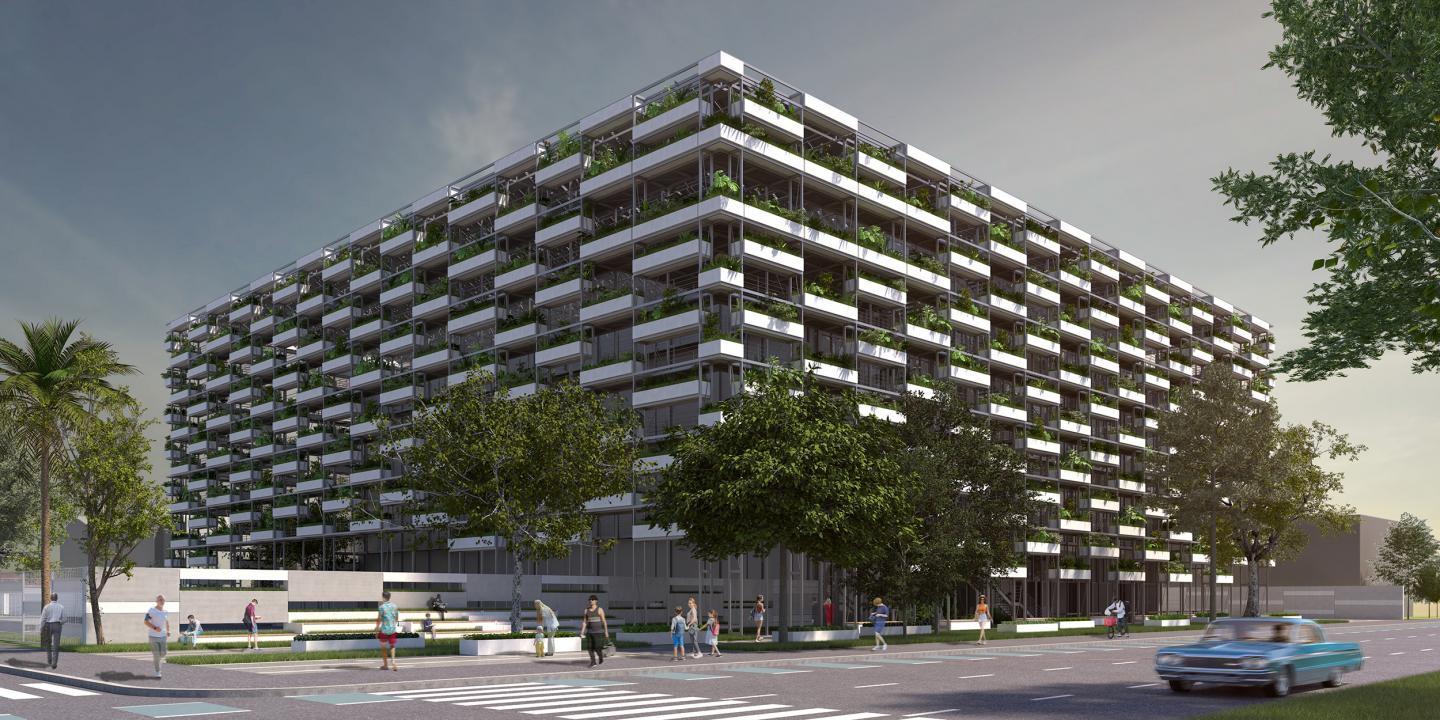

The design for the international competition for a vertical farm facility planned for construction on a site near downtown Los Angeles primarily aimed to ensure that the building's massing, which exceeds that of neighboring structures, avoids creating a visually disruptive impact on its surroundings, while simultaneously expressing its function.
By reinterpreting the functional diagram in the competition brief, the vertical farming area was moved to the upper floor, minimizing the building's footprint. The structure was pulled to the southeastern corner of the site, allowing for future modular expansion of the facility with the addition of a vertical farm area if needed. This placement also created public open spaces on the main avenue side of the site and provided the necessary maneuvering space for trucks on the north side.
The high volume specified for the vertical farm area in the competition brief was divided into two floors, based on industry expert recommendations, to improve ventilation and access to plant racks. Accordingly, the technical volume related to the plant cultivation towers was designed as a multi-story space, including nutrient tank areas not requested in the brief. Additionally, a germination area was created within each plant cultivation module, supplementing the brief's requirements.
Moving the vertical farming areas to the 1st floor allowed the entire ground floor to be dedicated to functions requiring close internal and external relationships: collection and processing, hygiene, filtration and laboratories, cold storage, and offices. The collection and processing area was meticulously planned based on in-depth research to determine necessary spaces and their interrelationships. Office areas were located along the eastern facade of the ground floor, with entry from the closest point to the staff parking area. Next to the office area, the filtration, hygiene, and laboratory area was planned with direct connection to the offices. On the ground floor's southern facade, a technical area was located to allow direct equipment access, housing necessary electrical rooms and IT-communication and security monitoring rooms. The office and technical areas were separated from the rest of the ground floor by connecting corridors, allowing access in everyday attire. Access to other areas requiring high hygiene levels was arranged to require changing clothes and sterilization in the changing room. For the same reason, no entry was provided from the public spark room and café area to other parts of the ground floor.
Also on the ground floor, a spark room and café area was created, extending along the main avenue facade with a fully openable facade connecting to the public semi-open and open spaces in front. The spark room and café was designed as a food and beverage space with stands preparing popular street food dishes from vegetables produced at the facility and selling packaged products, also capable of hosting various events.
To avoid an unpleasant effect from the inevitable incongruity of the building mass—large, tall, and mostly opaque and flat compared to surrounding development—a secondary outer skin was created. The outer skin is not adjacent to the building mass but positioned at a distance to include the building's potential future expansion area on the north side and create public semi-open spaces facing the main avenue on the west side.
Designed as a permeable framework of slender steel elements, the outer skin aims to architecturally showcase the building's primary function: "plant cultivation." For this purpose, planters were placed between the structural profiles around the entire skin, integrated with the latest technology plant nutrition automation system that will be part of the building's operation. The planters were arranged in a fragmented pattern at different elevations, creating a visual rhythm that visually reduces the large dimensions of the mass. The resulting semi-permeable surface is designed to reduce excessive solar heat gain in the sunny and hot Los Angeles climate, decrease the air conditioning load of the plant cultivation areas that require a specific constant temperature, and provide shade for the open spaces along S. Broadway Avenue, making them usable year-round.
Catwalks were incorporated into the outer framework for access to planter maintenance and visitor circulation. Also within the steel framework, at the 18.00 level, a viewing terrace accessible from the public semi-open space via stairs and an elevator was created, offering views of downtown Los Angeles and capable of hosting various events.
The top of the outer structure is entirely covered with solar panels, and the generated renewable energy is planned to supply the facility's functions.
The indentation in the site's northeastern corner was utilized for additional functions not specified in the program but significantly contributing to the facility's sustainability. On the ground floor of the annex building in this corner, a composting area was created to process the significant organic waste from the facility into fertilizer. Adjacent to this, a battery area was planned to store electrical energy from rooftop solar panels, eliminating the need for fossil fuel-consuming generators. A basement level was created under the annex building to house fire, utility, and rainwater storage, as well as mechanical and storage areas. Rainwater collected on the main building's roof and greywater from fixtures within the facility is intended for use in toilets and for irrigating open spaces and facade landscaping.
The site's open spaces, except for the public area facing S. Broadway, are reserved for the facility's use and separated from surrounding roads and neighboring buildings as a security measure. The western boundary of the security perimeter is formed by a solid wall surface, a continuation of the closed mass facade. This wall is integrated with amphitheater-style tiers in both directions, creating recreational areas usable by both pedestrians on the street and staff using the service yard.
Most of the existing mature trees on the site's periphery were preserved and incorporated as elements of the landscape design. Planters, consistent with those on the facade, were placed in the public open space to showcase urban agriculture examples for public awareness.
In conclusion, a holistic "vegetated architecture", namely “Vege-Tecture”, was achieved by integrating the vertical farming within the building with the green facade and urban agriculture elements externally.
Steel structure, vegetated façade, photovoltaic panels
Ali Manço, Zühtü Usta, Ümit Arar
By reinterpreting the functional diagram in the competition brief, the vertical farming area was moved to the upper floor, minimizing the building's footprint. The structure was pulled to the southeastern corner of the site, allowing for future modular expansion of the facility with the addition of a vertical farm area if needed. This placement also created public open spaces on the main avenue side of the site and provided the necessary maneuvering space for trucks on the north side.
The high volume specified for the vertical farm area in the competition brief was divided into two floors, based on industry expert recommendations, to improve ventilation and access to plant racks. Accordingly, the technical volume related to the plant cultivation towers was designed as a multi-story space, including nutrient tank areas not requested in the brief. Additionally, a germination area was created within each plant cultivation module, supplementing the brief's requirements.
Moving the vertical farming areas to the 1st floor allowed the entire ground floor to be dedicated to functions requiring close internal and external relationships: collection and processing, hygiene, filtration and laboratories, cold storage, and offices. The collection and processing area was meticulously planned based on in-depth research to determine necessary spaces and their interrelationships. Office areas were located along the eastern facade of the ground floor, with entry from the closest point to the staff parking area. Next to the office area, the filtration, hygiene, and laboratory area was planned with direct connection to the offices. On the ground floor's southern facade, a technical area was located to allow direct equipment access, housing necessary electrical rooms and IT-communication and security monitoring rooms. The office and technical areas were separated from the rest of the ground floor by connecting corridors, allowing access in everyday attire. Access to other areas requiring high hygiene levels was arranged to require changing clothes and sterilization in the changing room. For the same reason, no entry was provided from the public spark room and café area to other parts of the ground floor.
Also on the ground floor, a spark room and café area was created, extending along the main avenue facade with a fully openable facade connecting to the public semi-open and open spaces in front. The spark room and café was designed as a food and beverage space with stands preparing popular street food dishes from vegetables produced at the facility and selling packaged products, also capable of hosting various events.
To avoid an unpleasant effect from the inevitable incongruity of the building mass—large, tall, and mostly opaque and flat compared to surrounding development—a secondary outer skin was created. The outer skin is not adjacent to the building mass but positioned at a distance to include the building's potential future expansion area on the north side and create public semi-open spaces facing the main avenue on the west side.
Designed as a permeable framework of slender steel elements, the outer skin aims to architecturally showcase the building's primary function: "plant cultivation." For this purpose, planters were placed between the structural profiles around the entire skin, integrated with the latest technology plant nutrition automation system that will be part of the building's operation. The planters were arranged in a fragmented pattern at different elevations, creating a visual rhythm that visually reduces the large dimensions of the mass. The resulting semi-permeable surface is designed to reduce excessive solar heat gain in the sunny and hot Los Angeles climate, decrease the air conditioning load of the plant cultivation areas that require a specific constant temperature, and provide shade for the open spaces along S. Broadway Avenue, making them usable year-round.
Catwalks were incorporated into the outer framework for access to planter maintenance and visitor circulation. Also within the steel framework, at the 18.00 level, a viewing terrace accessible from the public semi-open space via stairs and an elevator was created, offering views of downtown Los Angeles and capable of hosting various events.
The top of the outer structure is entirely covered with solar panels, and the generated renewable energy is planned to supply the facility's functions.
The indentation in the site's northeastern corner was utilized for additional functions not specified in the program but significantly contributing to the facility's sustainability. On the ground floor of the annex building in this corner, a composting area was created to process the significant organic waste from the facility into fertilizer. Adjacent to this, a battery area was planned to store electrical energy from rooftop solar panels, eliminating the need for fossil fuel-consuming generators. A basement level was created under the annex building to house fire, utility, and rainwater storage, as well as mechanical and storage areas. Rainwater collected on the main building's roof and greywater from fixtures within the facility is intended for use in toilets and for irrigating open spaces and facade landscaping.
The site's open spaces, except for the public area facing S. Broadway, are reserved for the facility's use and separated from surrounding roads and neighboring buildings as a security measure. The western boundary of the security perimeter is formed by a solid wall surface, a continuation of the closed mass facade. This wall is integrated with amphitheater-style tiers in both directions, creating recreational areas usable by both pedestrians on the street and staff using the service yard.
Most of the existing mature trees on the site's periphery were preserved and incorporated as elements of the landscape design. Planters, consistent with those on the facade, were placed in the public open space to showcase urban agriculture examples for public awareness.
In conclusion, a holistic "vegetated architecture", namely “Vege-Tecture”, was achieved by integrating the vertical farming within the building with the green facade and urban agriculture elements externally.
Steel structure, vegetated façade, photovoltaic panels
Ali Manço, Zühtü Usta, Ümit Arar
CASA MAD
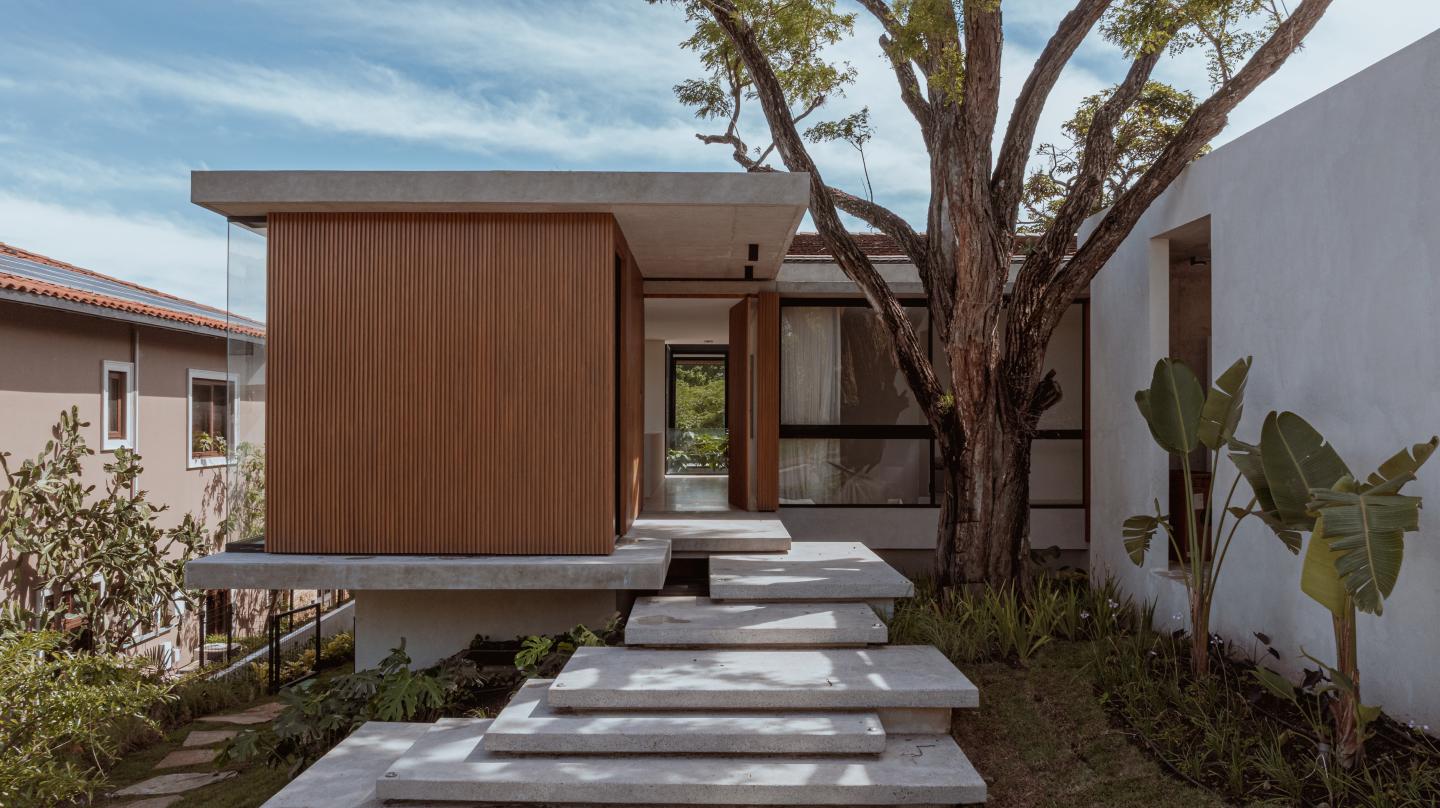

This two-story residence in Costa Rica was conceived as a dialogue between architecture and the natural landscape. Rather than imposing itself on the site, the design embraces the existing trees, allowing the built form to adapt organically to their presence. The house unfolds around a sequence of internal, lateral, and frontal courtyards that bring light and ventilation into every space, creating an intimate relationship between interior life and the surrounding vegetation. Each courtyard becomes a pause — a moment where architecture and nature meet in quiet equilibrium.
A distinctive rotated and cantilevered volume projects toward the horizon, framing the spectacular views of the city below. This gesture defines the character of the house, introducing a sense of movement and tension between solidity and lightness. Materials such as exposed concrete, wood, and glass emphasize contrast and continuity, while natural ventilation and shade from the preserved trees regulate comfort and reduce the environmental footprint. The design seeks balance between openness and privacy, between permanence and change.
The central courtyard gives light and natural ventilation to the living area on the underground floor.
The result is a residence that merges contextual sensitivity with architectural precision — an inhabitable framework where trees, light, and geometry coexist in harmony. It reflects a contemporary way of living that values stillness, transparency, and connection to place, reaffirming the idea that true modernity can coexist gracefully with nature.
Location: San Jose, Costa Rica
Size: 2 story house, 5,900 sq feet
Facade materials: Concrete, Teak wood, steel and glass
Architecture: JSARQ
Structural Engineer: Alberto Apestegui
MEP: Cristian Jimenez
Construction Company: Ravco
A distinctive rotated and cantilevered volume projects toward the horizon, framing the spectacular views of the city below. This gesture defines the character of the house, introducing a sense of movement and tension between solidity and lightness. Materials such as exposed concrete, wood, and glass emphasize contrast and continuity, while natural ventilation and shade from the preserved trees regulate comfort and reduce the environmental footprint. The design seeks balance between openness and privacy, between permanence and change.
The central courtyard gives light and natural ventilation to the living area on the underground floor.
The result is a residence that merges contextual sensitivity with architectural precision — an inhabitable framework where trees, light, and geometry coexist in harmony. It reflects a contemporary way of living that values stillness, transparency, and connection to place, reaffirming the idea that true modernity can coexist gracefully with nature.
Location: San Jose, Costa Rica
Size: 2 story house, 5,900 sq feet
Facade materials: Concrete, Teak wood, steel and glass
Architecture: JSARQ
Structural Engineer: Alberto Apestegui
MEP: Cristian Jimenez
Construction Company: Ravco
Chuanjiang Shipping Culture Park
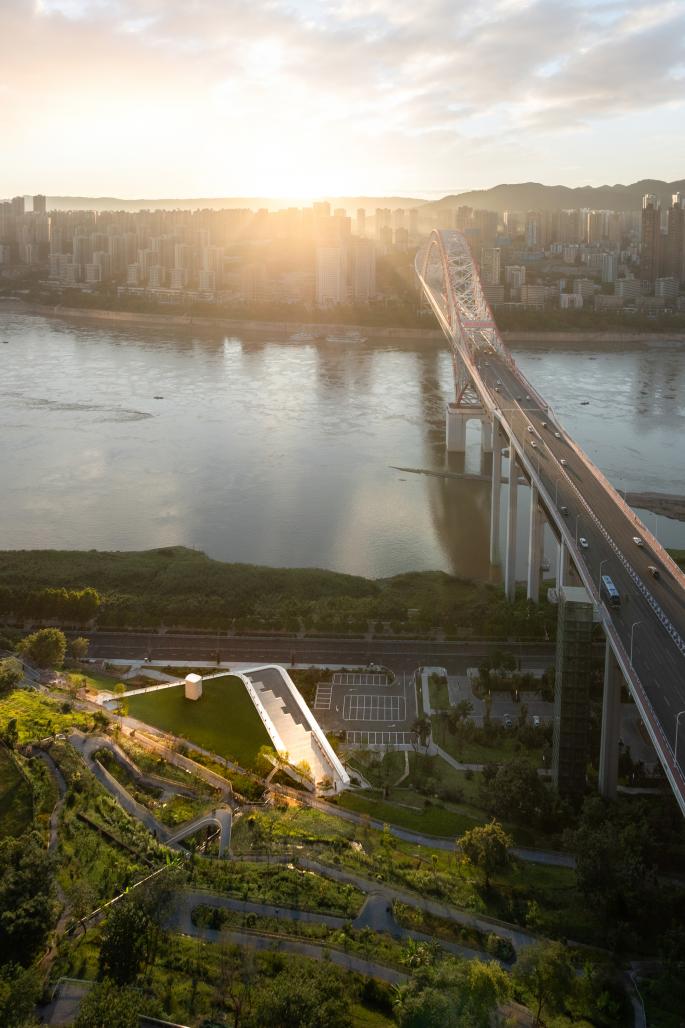

The architectural design of the Chuanjiang Shipping Cultural Park is closely aligned with the core theme of "Chuanjiang Shipping", using spatial narrative and formal language to recreate its historical heritage and spiritual essence. The project is located on an L-shaped sloped green space at the north end of Chaotianmen Yangtze River Bridge in Jiangbei District, Chongqing (formerly the site of Minsheng Company Machinery Factory), covering a total area of approximately 38,000 square meters (with the overall design taking a 100,000-square-meter site as the overall carrier). The exhibition hall has a construction area of 3,132 square meters and is scheduled to be completed and put into use in 2025.
Guided by the core concept of "Boats Cutting Through Torrential Rivers", the design deeply responds to the site's historical context and mountainous topographical characteristics: The architectural form draws inspiration from the landscape of the Chuanjiang River, the texture of rocks, and the image of Minsheng steamships. When viewed from south to north, it presents an open posture of "emerging from canyons and facing the broad river". The building extends outward layer by layer along the mountain slope, with exterior stone panels stacked in three layers from rough to fine textures, eventually transitioning to a smooth "ship bow" shape at the end of the building. Simultaneously, taking "a giant ship breaking through waves" as the core visual image, the facade outlines its contour through a combination of curves and fold lines. This not only enhances the dynamic visual tension of "navigation" but also efficiently introduces natural light, balancing aesthetic and practical functions.
In terms of space, relying on Chongqing's "mountain city" terrain, a "Three-Dimensional Chuanjiang" system is constructed, with the Chinese cursive form of the character "江 (river)" as the prototype. Mountain trails connect mountain paths, bridge elevators, indoor exhibition areas, outdoor landscape parks, and civil air defense caves (former underground workshops) to be renovated in the future, forming a vertical spatial sequence of "above-grade, on-grade, and below-grade". A vortex-themed sunken square is set at the main entrance, reserving the entrance to the air defense cave exhibition hall. The main building is equipped with a double-layer viewing platform, enabling a dialogue between historical scenes and modern landscapes. From a technical perspective, in response to constraints such as the Yangtze River channel protection line and underground sewage pipes, a lightweight design strategy is adopted. The curtain wall integrates weathering steel, quarried stone, and glass materials, which not only simulates the texture related to shipping but also ensures ecological protection and structural safety. A complete "Chuanjiang Shipping" design language is formed from macro layout to micro details, making it a typical practical case of "cultural heritage inheritance technological innovation" in urban renewal.
Total Area: Approximately 38,000 square meters (or 38,000 ㎡)
Building Area of the Exhibition Hall: 3,132 square meters (or 3,132 ㎡)
Architectural Concept Design: Chu Dongzhu, Yang Yang, Guan Shihan, Yang Jiyi, Chang Yuan, Tan Zhou.
Guided by the core concept of "Boats Cutting Through Torrential Rivers", the design deeply responds to the site's historical context and mountainous topographical characteristics: The architectural form draws inspiration from the landscape of the Chuanjiang River, the texture of rocks, and the image of Minsheng steamships. When viewed from south to north, it presents an open posture of "emerging from canyons and facing the broad river". The building extends outward layer by layer along the mountain slope, with exterior stone panels stacked in three layers from rough to fine textures, eventually transitioning to a smooth "ship bow" shape at the end of the building. Simultaneously, taking "a giant ship breaking through waves" as the core visual image, the facade outlines its contour through a combination of curves and fold lines. This not only enhances the dynamic visual tension of "navigation" but also efficiently introduces natural light, balancing aesthetic and practical functions.
In terms of space, relying on Chongqing's "mountain city" terrain, a "Three-Dimensional Chuanjiang" system is constructed, with the Chinese cursive form of the character "江 (river)" as the prototype. Mountain trails connect mountain paths, bridge elevators, indoor exhibition areas, outdoor landscape parks, and civil air defense caves (former underground workshops) to be renovated in the future, forming a vertical spatial sequence of "above-grade, on-grade, and below-grade". A vortex-themed sunken square is set at the main entrance, reserving the entrance to the air defense cave exhibition hall. The main building is equipped with a double-layer viewing platform, enabling a dialogue between historical scenes and modern landscapes. From a technical perspective, in response to constraints such as the Yangtze River channel protection line and underground sewage pipes, a lightweight design strategy is adopted. The curtain wall integrates weathering steel, quarried stone, and glass materials, which not only simulates the texture related to shipping but also ensures ecological protection and structural safety. A complete "Chuanjiang Shipping" design language is formed from macro layout to micro details, making it a typical practical case of "cultural heritage inheritance technological innovation" in urban renewal.
Total Area: Approximately 38,000 square meters (or 38,000 ㎡)
Building Area of the Exhibition Hall: 3,132 square meters (or 3,132 ㎡)
Architectural Concept Design: Chu Dongzhu, Yang Yang, Guan Shihan, Yang Jiyi, Chang Yuan, Tan Zhou.
Gyeonghui-dang
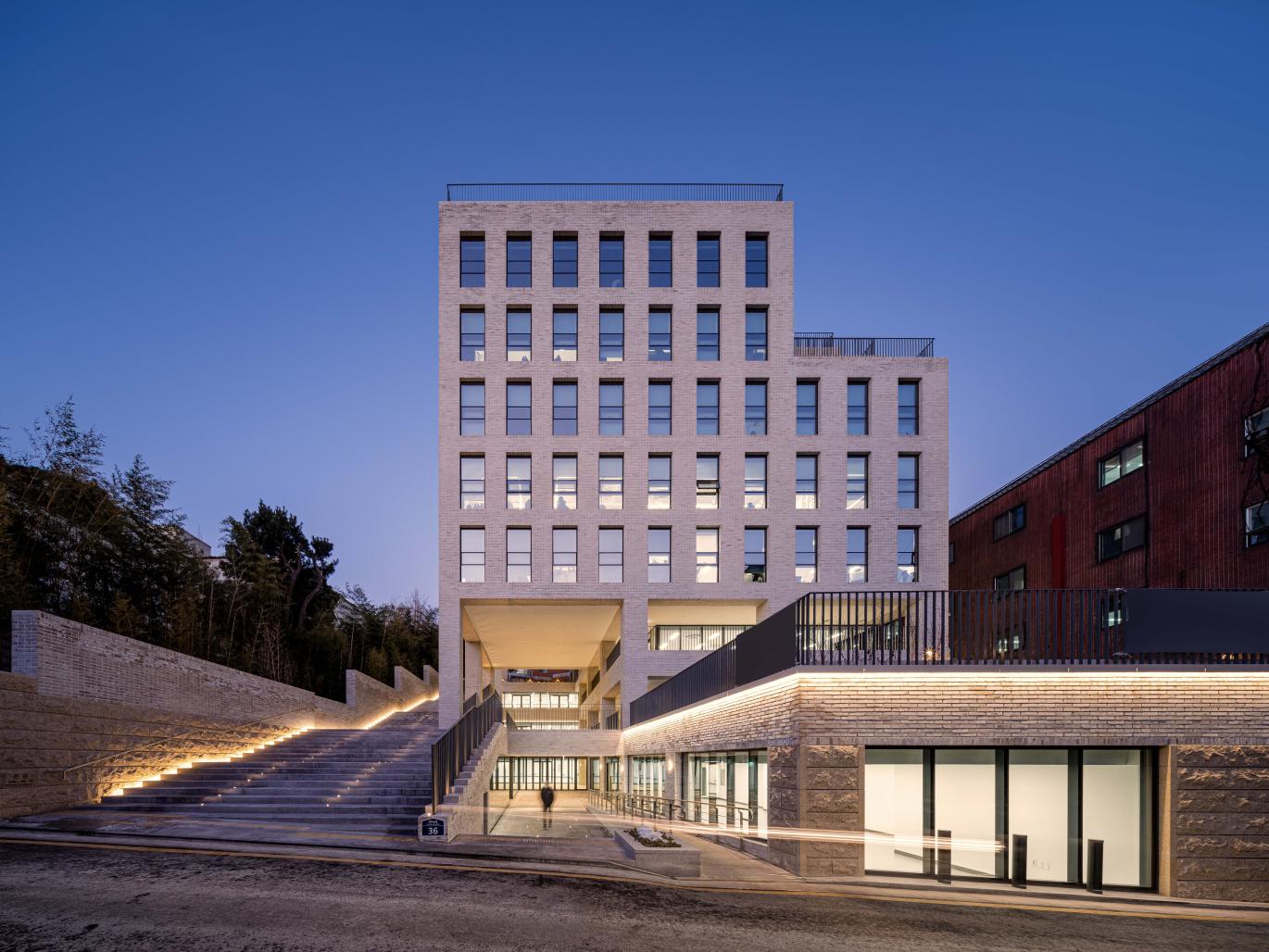

Nestled in the heart of Seoul's historic Jongno-gu District, the Relics Exhibition Museum is a testament to the city's rich cultural heritage. Located within a historical preservation area that was once part of the esteemed Gyeonghui Palace during the Chosun Dynasty, this unique site holds fragments of the past waiting to be unearthed. With a vision to preserve the historical context while meeting the owner's requirements, the building seeks to provide a space for culture and education, weaving the threads of history into the fabric of modern Seoul.
The development of the Gyeonghui-Dang was not without its challenges. The site's sloped terrain presented an obstacle, compounded by a strict aboveground-level development guideline capped at a FAR (Floor Area Ratio) of 200 percent. To maximize rentable areas while maintaining the site's historical integrity, the design devised an innovative solution. By setting the average ground-level elevation at the middle of the slope and establishing the abutting road level as B2, that managed to increase the FAR by over 80 percent. This approach not only optimized space utilization but also allowed for the creation of an inviting retail shopping environment, as the lower two floors were carved out.
Connecting four levels of retail spaces above the street level required a careful and efficient design. The outdoor stairs link the road to the top retail space adjacent to the Seonggok Art Museum. The long and narrow shape of the site posed another challenge, but it led to the ingenious vertical stacking of four floors of retail spaces along with a public staircase that penetrated the building. This design strategy, reminiscent of Rome's open-air Spanish Steps, provided visitors with a captivating three-dimensional linear pathway. Street experiences and events effortlessly flow into the building, facilitated by connecting gardens and retail areas.
The design concept revolves around creating a journey of street experiences, guiding visitors from street level to the rooftop. As they ascend the building, they are treated to breathtaking views of the nearby Gyeonghui Palace, enhancing their connection with the historical context. The newly established step, serving as a designated rest area for the neighborhood, is envisioned to attract numerous visitors to the site. Upon reaching the rooftop, visitors encounter a pocket garden and a plaza-like space, offering a serene and refreshing environment.
The building doesn't solely cater to visitors but also provides functional spaces for office users. Five floors of office space are seamlessly juxtaposed, featuring a separate circulation system to ensure a smooth flow of occupants. Roof gardens and terrace spaces were incorporated, offering office users a place to unwind and appreciate the surrounding views.
To honor the site's historical significance and blend harmoniously with the surroundings, reused bricks imported from China was chosen to clad the building exterior. This design choice pays homage to traditional building materials and enhances the building's timeless appeal, seamlessly integrating it into the historical city center.
Gyeonghui-Dang stands as a beacon of historical preservation and cultural enrichment in Seoul's bustling Jongno-gu District. With its innovative design, the building preserves the remnants of the past while providing a dynamic space for culture, education, and commerce. By seamlessly integrating history and modernity, the building serves as a testament to the enduring significance of Seoul's cultural heritage. As visitors and tenants are journey through its three-dimensional linear pathway, they embark on a captivating exploration of history, art, and architecture, connecting the past with the present in a harmonious dance of design and culture.
Client: Sungmoon Lee, Sungil Co.
Construction: Tracon E&C
Site area: 20,763.58 ft2 (1,929 m2)
Building footprint area: 12,094.33 ft2 (1,123.60 m2)
Total floor area: 93,678.31 ft2 (8,703 m2)
Design Architect: YKH Associates
Executive Architect: Ghowoo Architectural Design Group
Lead architect: Taesun Hong
Design team: Seungkwan Yang, Daejung Sang, Heewon Kim, Dongjae Kim, Jongwoon Kim, Chang Geun Jeong, Songhyun Cho, Yeongmuk Bak, Jaemin Kim, Motbi Choi, Chaewan Kim
The development of the Gyeonghui-Dang was not without its challenges. The site's sloped terrain presented an obstacle, compounded by a strict aboveground-level development guideline capped at a FAR (Floor Area Ratio) of 200 percent. To maximize rentable areas while maintaining the site's historical integrity, the design devised an innovative solution. By setting the average ground-level elevation at the middle of the slope and establishing the abutting road level as B2, that managed to increase the FAR by over 80 percent. This approach not only optimized space utilization but also allowed for the creation of an inviting retail shopping environment, as the lower two floors were carved out.
Connecting four levels of retail spaces above the street level required a careful and efficient design. The outdoor stairs link the road to the top retail space adjacent to the Seonggok Art Museum. The long and narrow shape of the site posed another challenge, but it led to the ingenious vertical stacking of four floors of retail spaces along with a public staircase that penetrated the building. This design strategy, reminiscent of Rome's open-air Spanish Steps, provided visitors with a captivating three-dimensional linear pathway. Street experiences and events effortlessly flow into the building, facilitated by connecting gardens and retail areas.
The design concept revolves around creating a journey of street experiences, guiding visitors from street level to the rooftop. As they ascend the building, they are treated to breathtaking views of the nearby Gyeonghui Palace, enhancing their connection with the historical context. The newly established step, serving as a designated rest area for the neighborhood, is envisioned to attract numerous visitors to the site. Upon reaching the rooftop, visitors encounter a pocket garden and a plaza-like space, offering a serene and refreshing environment.
The building doesn't solely cater to visitors but also provides functional spaces for office users. Five floors of office space are seamlessly juxtaposed, featuring a separate circulation system to ensure a smooth flow of occupants. Roof gardens and terrace spaces were incorporated, offering office users a place to unwind and appreciate the surrounding views.
To honor the site's historical significance and blend harmoniously with the surroundings, reused bricks imported from China was chosen to clad the building exterior. This design choice pays homage to traditional building materials and enhances the building's timeless appeal, seamlessly integrating it into the historical city center.
Gyeonghui-Dang stands as a beacon of historical preservation and cultural enrichment in Seoul's bustling Jongno-gu District. With its innovative design, the building preserves the remnants of the past while providing a dynamic space for culture, education, and commerce. By seamlessly integrating history and modernity, the building serves as a testament to the enduring significance of Seoul's cultural heritage. As visitors and tenants are journey through its three-dimensional linear pathway, they embark on a captivating exploration of history, art, and architecture, connecting the past with the present in a harmonious dance of design and culture.
Client: Sungmoon Lee, Sungil Co.
Construction: Tracon E&C
Site area: 20,763.58 ft2 (1,929 m2)
Building footprint area: 12,094.33 ft2 (1,123.60 m2)
Total floor area: 93,678.31 ft2 (8,703 m2)
Design Architect: YKH Associates
Executive Architect: Ghowoo Architectural Design Group
Lead architect: Taesun Hong
Design team: Seungkwan Yang, Daejung Sang, Heewon Kim, Dongjae Kim, Jongwoon Kim, Chang Geun Jeong, Songhyun Cho, Yeongmuk Bak, Jaemin Kim, Motbi Choi, Chaewan Kim
